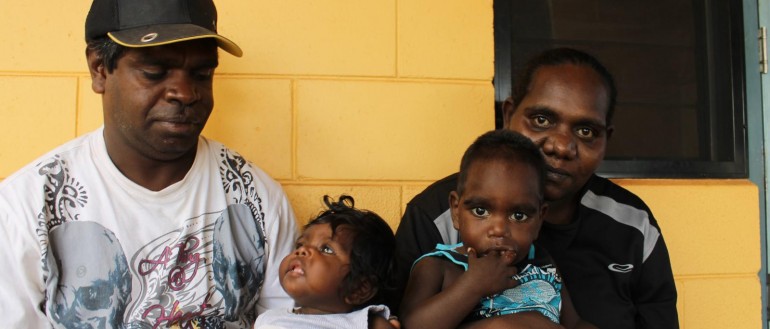A first ever novel, innovative study into the impact of two different vaccines used to combat the many different bacteria causing middle ear infections and hearing impairment in First Nations babies has been published in the prestigious medical journal The Lancet Infectious Diseases. This paper has local and global implications, leading to the better understanding of prevention strategies tailored to the needs of First Nations babies worldwide.
The ground-breaking research which began in April 2013 was made possible by the enormous, and ongoing contribution of Australia’s First Nations people, whose long-term commitment to the study has resulted in the global improvement in understanding the impact of different pneumococcal vaccines on the immune response, on otitis media and hearing impairment.
Funded by the National Health and Medical Research Council (NHMRC), it is one of few trials internationally to be truly independent of the pharmaceutical companies, allowing these vaccines to be impartially tested against each other - in what’s called a head-to-head trial.
This innovative trial led to several new and important findings; one vaccine was a lot better than the other vaccine when given to babies as early as age one month. The trial also showed that infant and booster dose combinations of the two different vaccines offers cost saving, and flexibility if there are issues of vaccine supply. This is the first evidence to support greater efficiency whilst maintaining vaccination impact.
Lead author, Menzies School of Health Research Professor Amanda Leach AM, said these vaccines are known to reduce the number of babies requiring hospitalisation for a range of pneumococcal diseases, however the findings show that the prevention of otitis media and hearing impairment, unfortunately remains a frustrating challenge.
“The current vaccines available are effective against many targeted strains and we found less otitis media caused by these strains. However, the study also showed an increase in otitis media caused by non-targeted strains. There was also no effect on the extremely persistent and stubborn bacteria called NTHi, which causes most otitis media. We know that vaccines work, but there are simply too many ear and nose bugs out there, and we don’t yet have vaccines for all of them.”
“This in no way closes the gate on vaccination for otitis media. Obviously, we know expanded vaccines are being developed and some will soon be available. Further trials with First Nations people should be prioritised to ensure the formulations, timing, and dosing of new vaccines are appropriate to the needs of babies living in remote communities.”
“Despite the challenges, we need to keep working together and conduct further research because the health and wellbeing of First Nations children in Australia and the world over depend on it,” Prof Leach said.
Aboriginal and/or Torres Strait Islander children have the highest reported rate of otitis media and burst ear drums in the world. Tackling this condition is vital, as without action, children infected with these bacteria are unable to hear properly, causing issues with speech, language, learning, and behaviour.
The study involved 425 Australian First Nations babies over seven years in collaboration with the many families, health service staff, research nurses, and co-investigators.
The full published article can be read here: https://www.thelancet.com/journals/laninf/article/PIIS1473-3099(22)00272-9/fulltext

